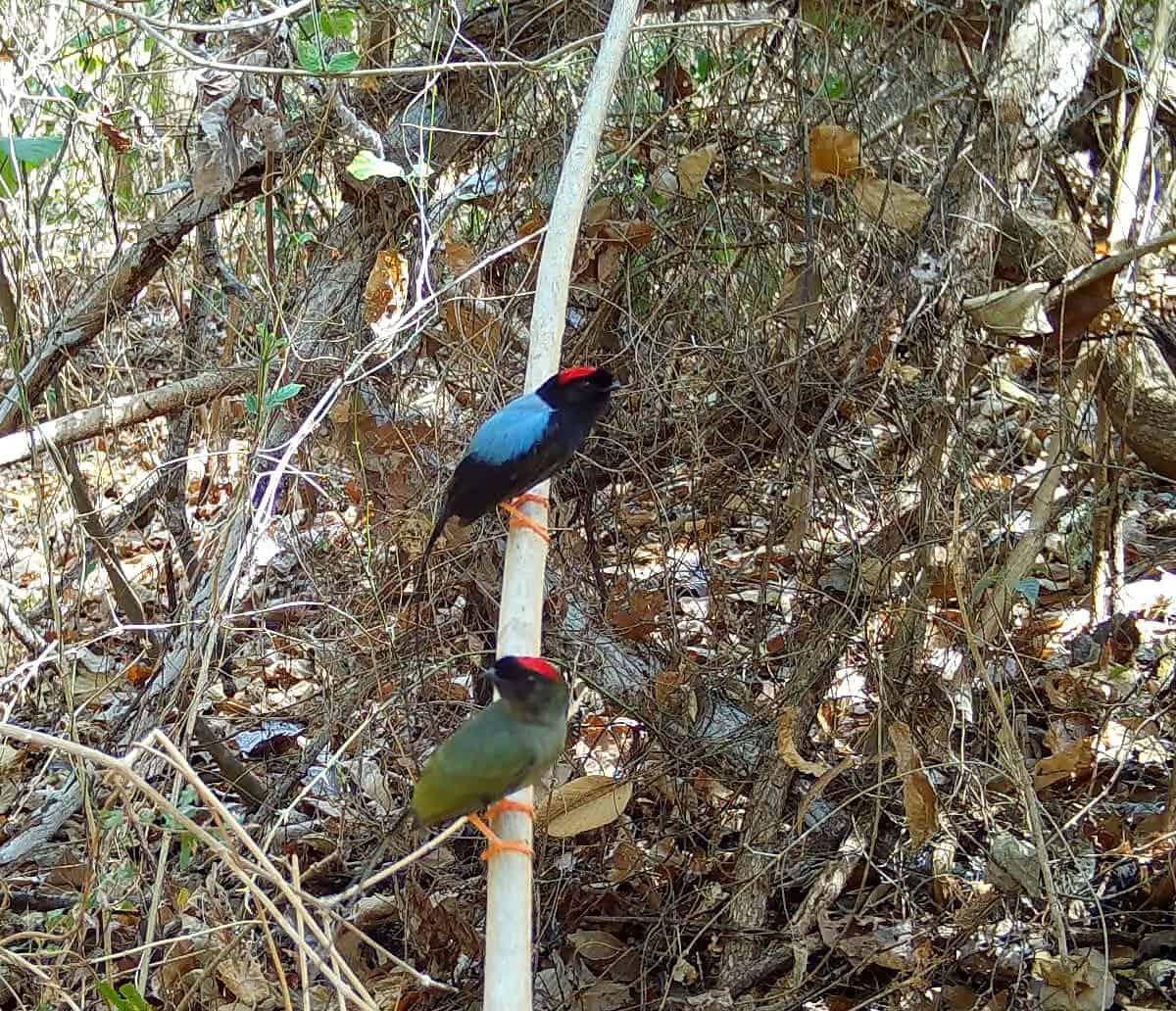Meet the long-tailed manakin. A species of bird where the males are pretty, but the females hold all the cards.
The long-tailed manakin (Chiroxiphia linearis) is known as the saltarín toledo in español, a name they earned by yelling ‘’to-lay-do’’ throughout the forests that they call home.
Long-tailed manakins are sexually dimorphic, meaning that the males and females look distinct. In the case of these little birds, the males are quite elegant, and the females are frequently referred to in the literature as drab. Male long-tailed manakins have the characteristic long tail. It consists of two thin central tail feathers that are about as long as the rest of the body.
They’re mostly black with a bright blue back and a red crest. In short, they’re fancy little birds. The female is a solid olive-green color with a tail that looks like it was going to grow two long thin tail feathers like the male but gave up after a few centimeters.
What the female lacks in ostentatious plumage she makes up for with the ability to choose which male long-tailed manakin gets to make the next generation of manakins. The only reason the males look as bright and interesting as they do is because that’s what the female prefers. And it’s not enough for a male to simply look good; he also must be a fine dancer. Long-tailed manakins are famous for their courtship displays.
There are a couple of versions, but generally, two or three males do a whole lot of singing and fluttery dancing in an attempt to impress one female. If all goes to plan, the dominant male wins a chance at creating the next crop of manakins. The other, subordinate male or males, get to feel good about practicing their dance moves until it’s their turn to perhaps be the dominant male next time around.
I’m a big long-tailed manakin fan. We frequent the same forests in Guanacaste, and their calls and dance moves never fail to evoke a warm feeling in my little biologist heart. For years, I’ve had the intention of finding a group of males dancing like crazy for a female, with the goal being able to sit quietly and observe them in order to identify the perfect place to set up a camera trap.
Usually, the rush of multiple field visits in a day or needing to pick up kids from school doesn’t allow me the time needed for this type of investigation. Recently the timing worked out, and I sat quietly watching manakins dance for a solid 45 minutes until I found a thin vine where they kept returning to get their dance on.
I placed a camera trap on the vine in hopes of recording their courtship dance, which is exactly what happened for about a day and half until a black spiny-tailed iguana knocked it over.
The results are in the video below. Enjoy.
About The Author
Vincent Losasso, founder of Guanacaste Wildlife Monitoring, is a biologist who works with camera traps throughout Costa Rica. Learn more about his projects at: Instagram and facebook or by email.






